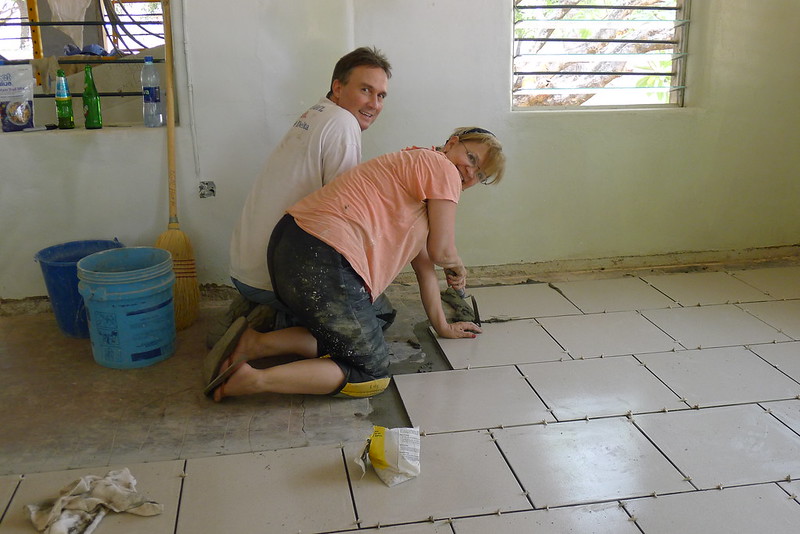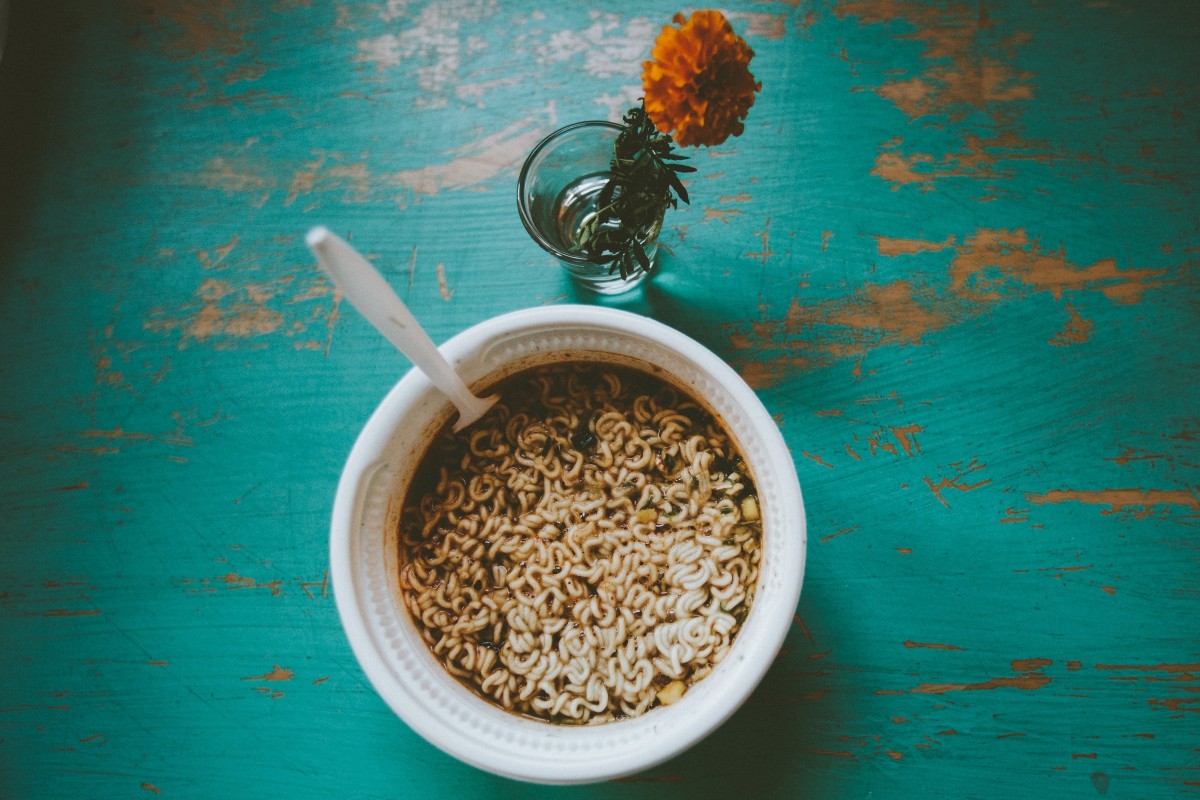Rating of the best plaster floats for 2022
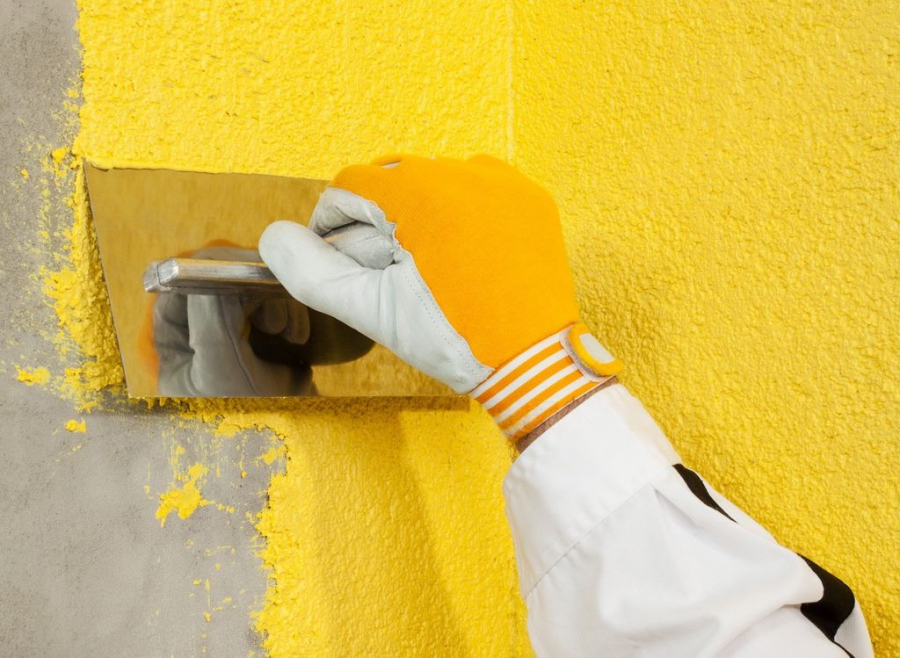
On the recommendation of designers, only historical styles provide for wall decoration in the form of plastering by hand. All the rest require alignment and polishing of different levels. In a modern interior, a smooth, like a mirror, surface of walls and ceilings is valued. The rating of the best plaster trowels for 2022 will help you choose a convenient and high-quality tool for wall finishing.

Content
Why do you need plaster trowels
Plaster is used for leveling brick, stone or block walls. Additionally, it is used as a heat insulator against cold and heat. A relatively thick layer of heavy wet composition cannot be leveled and immediately smooth. As it dries, the surface roughness increases.
Putty is laid in a thin layer and is not able to hide irregularities. Wallpaper and painting will only emphasize the roughness and bumps. Graters remove the protrusions, gradually smoothing out all the bumps and bringing the walls to a state of perfect smoothness. Their classification is carried out according to the materials of the sole body and the operations performed: grinding, applying the solution, leveling, grouting.
Before buying, analyzing the parameters of the product, one should take into account the type of plaster, its composition, the required degree of smoothness.

Top Producers
The popularity of models depends not only on the convenience of work, but also on the popularity of the manufacturer. In 2022, construction tools manufactured by firms remain popular: FIT, Kapriol, TOPEX, Stayer and others. Domestic manufacturers are not inferior to foreign ones in terms of the quality of products and their popularity: SibrTech, RemoColor, Zubr.
How to choose a suitable grater for plaster, which company is better and more reliable products, will tell our rating for 2022 and a review of popular models, according to buyers and professionals.
The best graters for plaster
The photo shows that plaster graters have a simple device and do not differ much in design. At the same time, the construction tool has different sizes and sole materials and their functions are different.
Wooden
Wooden building tools were the best from the invention of plaster until the end of the last century, until materials appeared that did not swell from moisture and dry out in the sun. Currently, a warm natural material - wood is used mainly for the manufacture of handles and cases. The base and sole are made of stronger and harder metals and plastics.

Hand graters with a cavity of wood are made nowadays by amateur craftsmen. "Grout boards" are afraid of water, quickly swell and wear out. According to buyers, it is more convenient to work with durable graters that can last a long time.
Kapriol 23051 210×140
878 rub.
1st place, padded handle.
A stucco wooden handle with a base of 210x140 mm does not require any special work skills. With its help, even an amateur can perfectly align the wall. Tool with aluminum base and sponge pad is used for sanding cement plasters, gypsum and mixed compositions after they have dried.
The wooden handle is covered with paint, has slips of anti-slip material. It is easy to clean, does not swell from moisture, has a beautiful appearance. The base is reinforced with an aluminum plate.
- comfortable in work;
- original design;
- suitable for lovers;
- durable;
- additional functionality - grouting.
- dirt accumulates at the transition points of the linings.
TOPEX 13A248 480×130 mm
723 rub.
2nd place, polutorok.
A plaster trowel with a massive wooden handle and a metal base is designed for application and preliminary leveling - it is used as a trowel. The device can be used for grouting dried gypsum mixtures and grinding wet gypsum-based compositions. The sharp, hard edges of the metal base easily cut off the bumps of the fresh composition, leaving behind a perfectly smooth surface.
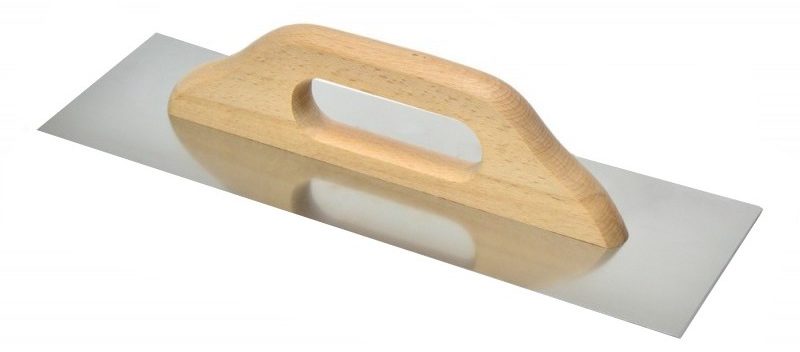
The length of the sole, 480 mm, contributes to the capture of a wide strip and the rapid processing of the entire wall. The professional tool is intended for internal works.
- lasting;
- long service life;
- quick grinding of gypsum mixtures.
- skills are required to operate the tool.
Kapriol 23060 240×100
689 rub.
3rd place, universal.
Model Kapriol 23060 with a narrow overlay is used as an emery for grinding dry putties, grouting. The handle is made of natural material - wood, always pleasant to the touch and warm even when working in the cold.
The sponge pad is attached to the aluminum base, lightweight and durable. It does not flex when pressed, keeps the flatness of the sole.

- natural materials;
- European quality;
- comfortable in work;
- durable.
- the handle swells from water, it is difficult to wash.
Plastic
It is difficult to list what plastic graters are. They lead the ranking of high-quality and popular models. According to buyers, a lightweight and durable tool is indispensable for repairing an old and finishing a new home.
Plastic tools are used mainly for applying a thin plaster layer and its initial leveling. During construction, they are used mainly for interior work, where the plaster layer is thinner. What you should pay attention to when working outdoors - the plastic sole is great for creating a relief pattern of decorative plasters.
FIT 39735 230×120 mm
291 rub.
1 place, with net holder.
A plaster grater from a Chinese manufacturer is designed for smoothing and grinding the surface of walls with replaceable elements. The base is the abrasive mesh. If desired, a sanding sheet is fixed. Clamps have wing bolts, twisted by hand. Durable aluminum outsole.

Tool weight - 292 gr. Working area — 230×120 mm. The massive handle allows you to press the sole with any effort. The mesh is changed by unscrewing and tightening 2 bolts by hand.
- working surface with replaceable roughness;
- aluminum sole;
- can be used with abrasive mesh and sanding paper;
- quick change of consumables;
- inexpensive;
- durable.
- uneven clamping across the width of the strip.
STAYER 0815-0 280×140 mm
141 rub.
2nd place, for grinding plaster and polystyrene.
Sturdy plastic base and round handle made of the same material. The sole is rough with a small relief. Painting building tools are designed for professionals with large volumes of finishing work. The model is made in China. Weighs only 284 gr.

The polyurethane outsole is firmly connected to the body by joining homogeneous materials at the molecular level.It is enough to process more than 1000 m2 of plastered surface. 2 year manufacturer's warranty.
- budget cost;
- light;
- durable;
- wear-resistant;
- 2 year warranty.
- sometimes the handle is separated from the body.
Hammer 601-059 230×150 mm
99 rub.
3rd place, universal.
European-made Hammer 601-059 plastic model with a porous structure and a hard fiber directed perpendicular to the surface to be treated, does an excellent job of sanding dry plaster and polystyrene. Clamps on the end edges of the upper part of the body expand the range of work performed by it. You can install a sanding belt and an abrasive mesh on the grater.

The sturdy plastic base with an ergonomic handle has a footprint of 230×150 mm. Tool weight 220 g.
- low price;
- additional functions of the grid holder;
- light;
- durable.
- clamps and the handle are difficult to wash from the solution.
Polyurethane
Those who are interested, first of all, how much the tool costs, should pay attention to polyurethane products. The best manufacturers in Russia took first place in the ranking, creating light, durable and cheap models. Graters have excellent characteristics and a warranty period, new items are constantly being produced at a low price.
Popular polyurethane models are produced by domestic manufacturers. They are durable, highly resistant to abrasion and comfortable ergonomic shape.
Sibrtech 86621 280×140 mm
67 rub.
1 place, for polishing polystyrene.
The Sibrtech product is designed for grouting and grinding plastered walls.Model with a rough sole 280×140 mm and additionally with a grater function, it is used for polishing polystyrene.

The product made of polyurethane is comfortable to hold in your hand during operation. The grater for plastering works is operated for a long time, has high wear resistance, practically does not erase. It has a 12 month manufacturer's warranty.
- light;
- cheap;
- ergonomic comfortable handle;
- abrasion resistant;
- 1 year warranty.
- deficiencies were not found.
RemoColor 20-5-028 280×140 mm
79 rub.
2 place, for applying plaster.
Surprisingly light Russian-made grater, weighing only 130 g. It is used for applying plaster on walls and ceilings, as well as for sanding dry mixes and soft foam polystyrene. The roughened polyurethane outsole is durable, lasts a long time and removes all the protrusions well, smoothing the surface.

The dimensions of the sole, 280 × 140 mm, allow you to quickly and without unnecessary effort to level the walls and ceiling inside and outside the room. The handle is comfortable, made of a material with low heat dissipation, always pleasant to the touch, it seems warm.
- cheap;
- light;
- durable;
- 12 months warranty;
- universal in work with different materials.
- on dry cement mortars, the sole is quickly erased
Sibrtech 86632 420×220 mm
152 rub.
3rd place, grouting.
A model with a large sole area - 420 × 220 mm, in addition to grinding plaster, is used for grouting joints. The handle is ergonomically shaped with a smaller section at the top of the board. The rough sole easily removes protruding particles, making the plastered surface smooth.
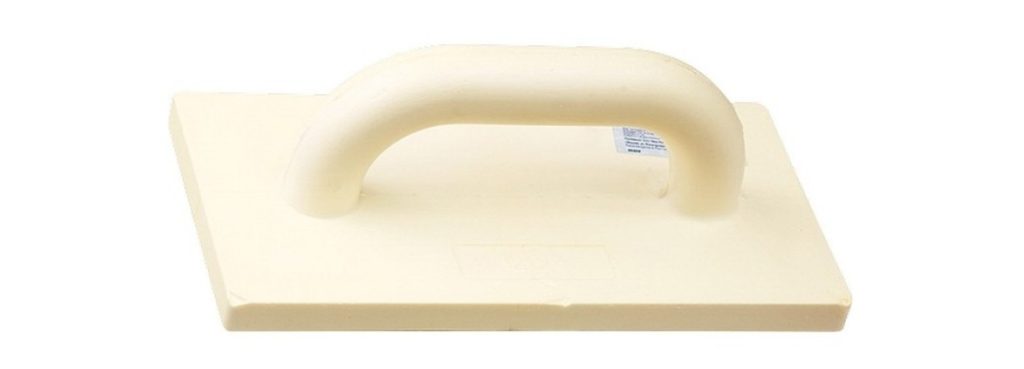
Sibtech provides a 3-month warranty for its product.
- low cost;
- durable;
- wear-resistant;
- light;
- comfortable in work;
- suitable for grouting.
- requires the application of great force when grouting.
Styrofoam
What fragile and relatively soft foam tools are intended for. They are not suitable for fast work with high pressure, they quickly break and wear out. How to use these super light models so as not to break.
Made from solid foam, they gently, gradually remove bumps and bring the surface to a perfectly smooth state. For this work, you need to be patient. The result on polymer and gypsum plasters will be excellent.
Ormix, 260×130 mm
92 rub.
1 place, for interior work.
Model Ormiks, 260×130 is made from a single piece of hard foam. It is characterized by fragility and the creation of mirror-smooth surfaces. You can work with the tool only with gypsum and polymer solutions after they have dried. You can not press hard and warp the sole.
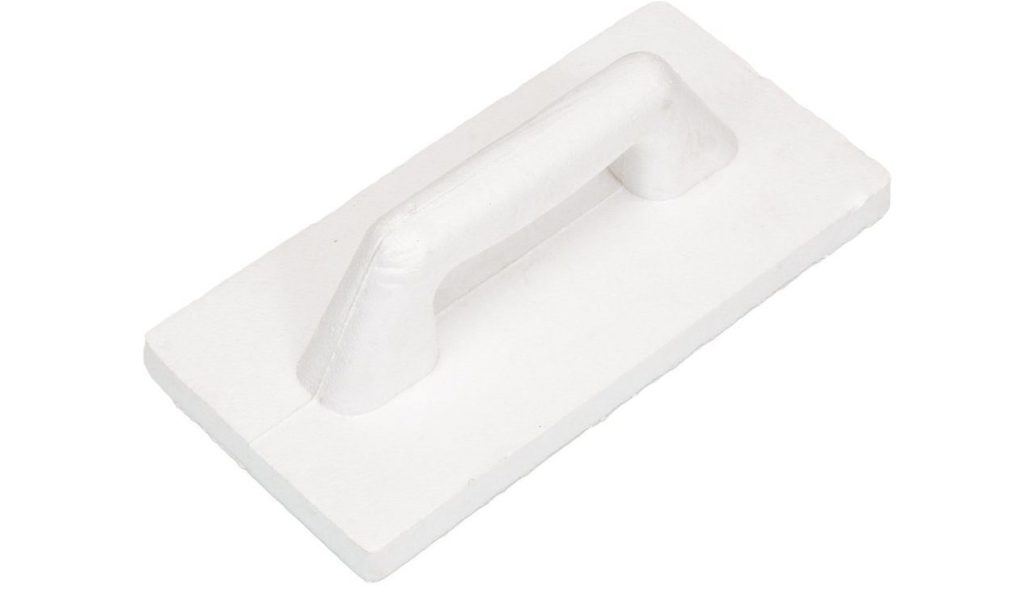
- cheap;
- suitable for lovers;
- light.
- fragile;
- quickly erased;
- you can't push too hard.
HARDY 270×130 mm
259 rub.
2nd place, whiter than snow.
Model HARDY 270×130 from a Polish manufacturer is made in the form of a single piece of foam by casting. It is easily mastered by beginners. Used for grinding and finishing plastered surfaces. You can work with the tool using polymer-based solutions.
An additional function of the grater is to level and compact the mortar when it is applied to walls and ceilings, smoothing it before finishing.
- easy to learn for beginners;
- light - 60 gr;
- average price;
- produces a flat, smooth surface.
- grinds only polymer compositions;
- quickly erased.
Ormix, 500×120 mm
132 rub.
3rd place, for light plasters.
Long foam trowel Ormiks, 500×120 is used as a trowel for applying and pre-leveling light synthetic mixtures and compositions with fillers. Features of the model - a long base of 500 mm allows you to quickly level large areas. Due to the low weight, you can work with the ceiling for a long time, the load on the hands is minimal.
- budgetary;
- light weight;
- long length.
- only suitable for working with light loose materials;
- fragile.
Spongy
Why do you need a sponge grater with its loose sole. If you look at customer reviews, it creates the best pattern on the “bark beetle”, does an excellent job of grinding various mixtures. For gypsum, the porous surface is convenient - it quenches bubbles, compacts it.
Only the sole is usually made from hard sponge. The rest of the parts are plastic and other durable materials.
Matrix 86802 280×140 mm
507 rub.
1st place, spongy sole.
The strength of the grater Matrix 86802 provides a plastic body and handle. Spongy base with a porous structure easily cuts off all protrusions on the surface, finished with cement and gypsum plaster.

The model is designed for interior work. Working surface dimensions 280×140 mm. Height 90 mm. The handle is comfortable to grip.
- high performance;
- light;
- durable case;
- Beautiful design.
- the sponge is easily separated from the body.
CORTE 0386C 280×140 mm
725 rub.
2nd place, rubber sponge.
The CORTE 0386C model with rubber backing is used for the application of gypsum-based wet plaster. The porosity of the rubber is chosen in such a way as to prevent foaming of the gypsum during operation. As a result, the finishing material lays down in an even dense layer.
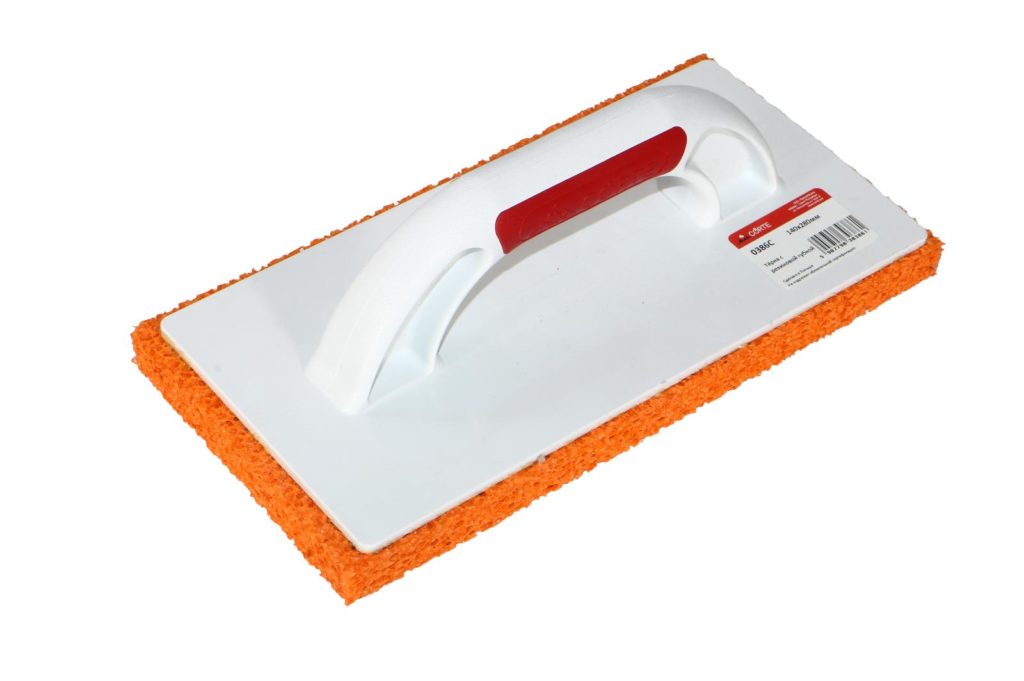
The tool has a durable plastic body, a comfortable handle with colored inserts that prevent your hand from slipping, even if it is wet.
- durable;
- prevents foaming of gypsum;
- ergonomic handle with anti-slip inserts;
- easy to clean;
- Beautiful design.
- deficiencies were not found.
STAYER 2-08165-25 280×140
285 rub.
3rd place, for grinding and grouting.
Rigid foam rubber sponge 25 mm thick grinds plastered and putty surfaces, used for grouting. The tool remains in working condition for a long time, having high resistance to abrasion.

The case from high-strength plastic maintains big loadings. The handle fits comfortably in the hand. The size of the working surface, 280 × 140 mm, is optimal for interior work.
- does not fade for a long time;
- light;
- durable;
- comfortable handle;
- universal.
- after erasing the sole from the foam sponge, you have to throw away the case with the handle.
metal
Metal graters have a variety of surfaces. How to choose the right tool for a particular process, you should focus on the task. In the last century, most metal soles were smooth. They were used for "iron" concrete floors and paths.The description of the process is simple - they sprinkled the mortar that had not yet hardened with dry cement without additives and rubbed it in, creating a thin, hard crust, without pores. She repelled water and did not allow destruction.
Rub a hard concrete surface only with a grater with sharp and hard metal spikes. Other materials simply will not cope with the cement mixture.
The metal is also suitable for removing the remnants of the old finish during repair and restoration.

Hardy (1004-102515) 140×255 mm
1169 rub.
1st place, grater-scraper.
A grater with a two-component handle from the Polish manufacturer Hardy has a perforated sheet base. The holes were formed when the spikes were pierced, which covered the working side of the instrument.
The tool is used as a scraper for leveling surfaces covered with gypsum plaster. The base has dimensions of 260×140 mm. The total height of the grater is 90 mm.
- quickly and efficiently levels gypsum;
- cleans concrete surfaces;
- comfortable handle.
- experience with this type of instrument is required.
KUBALA steel 285×145 mm
895 rub.
2nd place, removal and alignment.
The base of the KUBALA grater is made of metal strips. With sharp side ends, they cut off excess plaster.
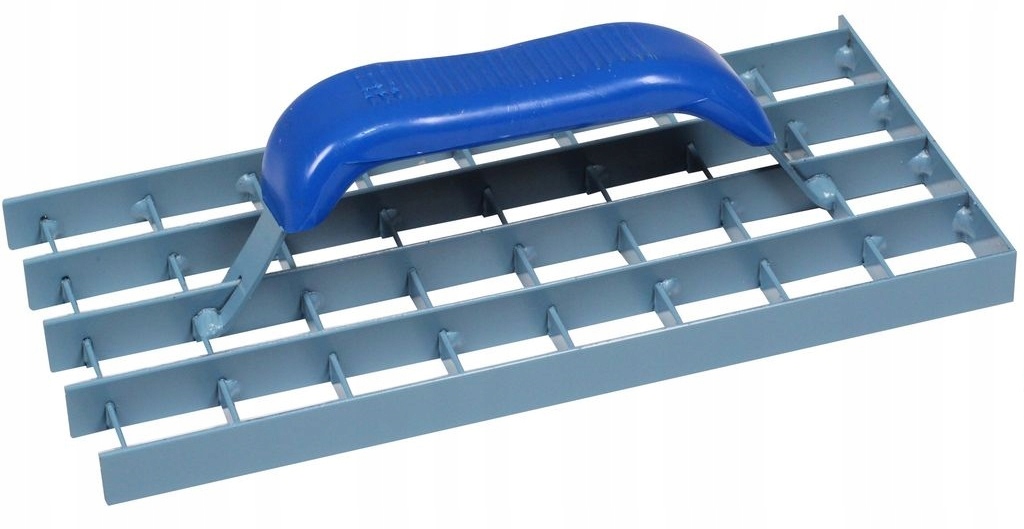
The tool is used to remove plaster when preparing surfaces for repairs, when it is necessary to remove the old layer of plaster. The scraper evens out soft lime finishes and wet fresh gypsum finishes.
The handle is plastic, dressed on a metal base.
- quickly removes a thick layer of cement plaster;
- durable;
- reliable;
- long service life.
- expensive;
- Levels only light lime plaster.
CORTE 0344C 270×130 mm
430 rub.
3rd place, for polystyrene.
The CORTE 0344C is made entirely of durable alloy steel. The handle has a plastic slip to prevent slipping. The rough base with sharp protrusions works like a rough file, removing the surface from polystyrene and synthetic plaster mixtures.
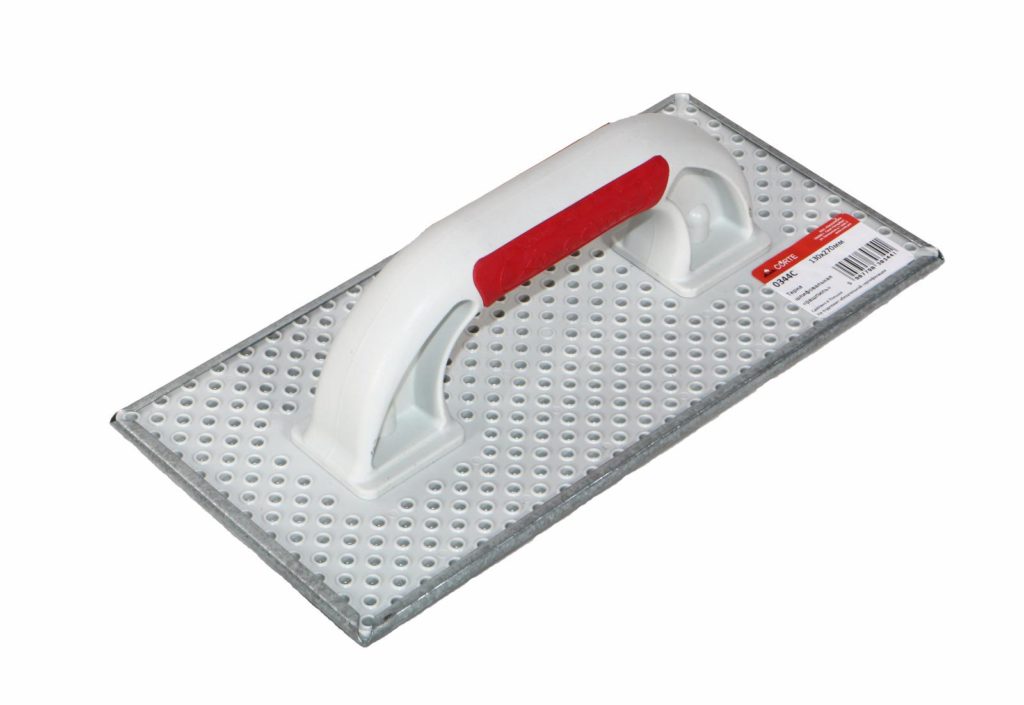
Dust and small chips pass through the holes in the base. Thanks to this, the tool does not clog for a long time and remains clean.
- easily makes the surface even;
- comfortable handle.
- works only with soft materials.
How to choose the right tool
The success of the plaster grinding work and how quickly everything can be done depends on the correct selection of the tool. Main selection criteria:
- type of plaster to work with;
- interior or exterior decoration;
- surface area;
- under what kind of finish is grinding;
- type of work.
To this should be added the experience of the performer. It is necessary to listen to what advice the specialist gives. A novice plasterer cannot cope with a tool that has a large sole. At the same time, large areas of walls and ceilings will have to be overwritten with a small overlay for a long time.

The main mistakes when choosing - focus on prices. The budget cost does not mean at all that the instrument is amateur. The cheapest foam graters require a lot of experience and certain skills. When choosing which model to buy, you need to read the characteristics. The handle should be comfortable, ergonomic, the sole is small, the lining for a specific type of plaster.
Where to buy a good plaster grater
For amateurs who have never held a grater in their hands and have not worked with it, the answer to the question “where to buy?” Is simple. Go to a hardware store. Hold the tool in your hands, see which handle fits more comfortably. Pick up an inexpensive polyurethane or plastic model and try it out.
After that, you can choose and order online the optimally suitable model. The online store has a huge selection, there are products from different manufacturers, cheap and expensive.
Grater and patience will help the amateur to make a professional repair. An interior with perfectly smooth walls looks better than irregularities hidden under the wallpaper.
new entries
Categories
Useful
Popular Articles
-

Top ranking of the best and cheapest scooters up to 50cc in 2022
Views: 131655 -

Rating of the best soundproofing materials for an apartment in 2022
Views: 127696 -

Rating of cheap analogues of expensive medicines for flu and colds for 2022
Views: 124523 -

The best men's sneakers in 2022
Views: 124040 -

The Best Complex Vitamins in 2022
Views: 121944 -

Top ranking of the best smartwatches 2022 - price-quality ratio
Views: 114982 -

The best paint for gray hair - top rating 2022
Views: 113399 -

Ranking of the best wood paints for interior work in 2022
Views: 110323 -

Rating of the best spinning reels in 2022
Views: 105333 -

Ranking of the best sex dolls for men for 2022
Views: 104371 -

Ranking of the best action cameras from China in 2022
Views: 102221 -

The most effective calcium preparations for adults and children in 2022
Views: 102015



